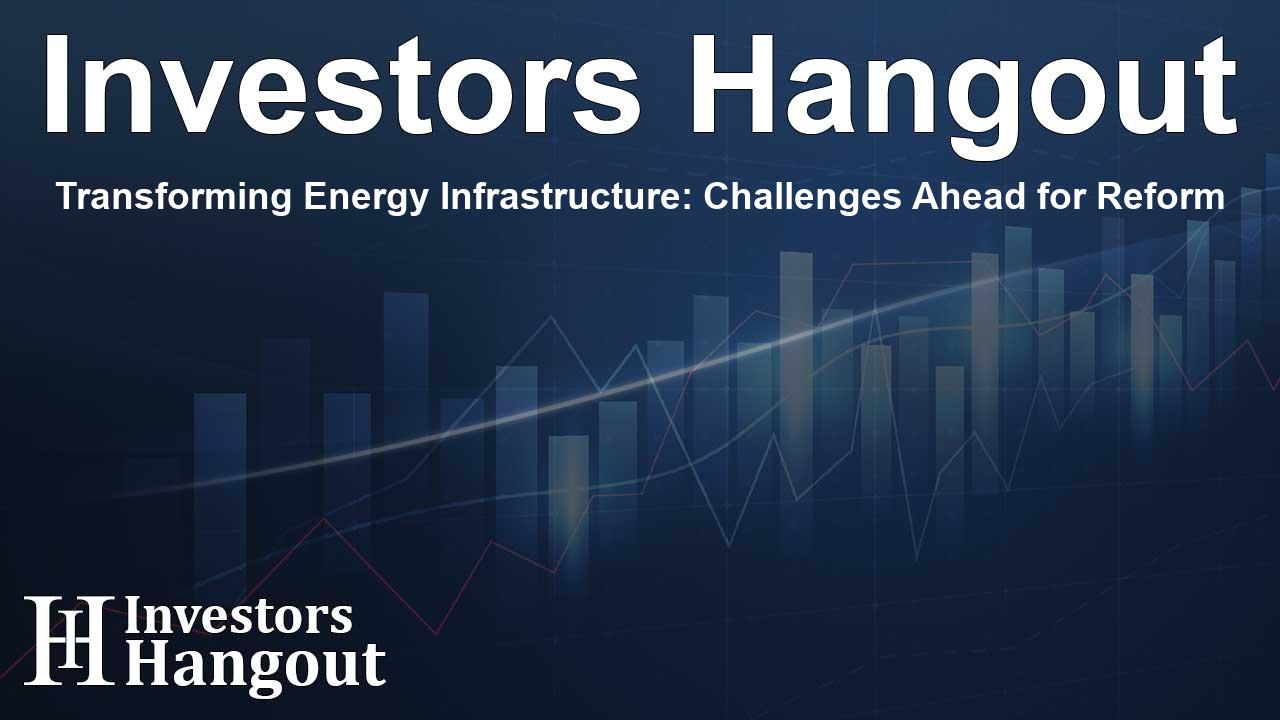Transforming Energy Infrastructure: Challenges Ahead for Reform

Challenges in Transforming the U.S. Power Grid
The U.S. power grid is facing a critical juncture, as the current administration emphasizes the need for immediate reform. While acknowledging that swift action is required, the path forward is anything but straightforward. The long-distance transmission lines remain a particularly challenging component of the grid, presenting multifaceted issues that need to be addressed.
Current Landscape of Energy Production
There is a significant awareness of the pressing need to enhance energy production across the United States. This comes in light of growing demand and supply chain vulnerabilities. Industry leaders are advocating for the implementation of new strategies that would allow for more efficient energy production and distribution. The current trends highlight how the energy sector must adapt to meet increasing challenges, particularly from advancing technologies and consumer needs.
Executive Actions and Energy Infrastructure
Recently, executive actions announced aim to facilitate faster approval of energy projects. Initiatives include reviewing existing laws and regulations that may hinder progress. The goal is to overcome the bureaucratic hurdles that have historically delayed significant energy infrastructure advancements.
Spotlight on Infrastructure Development
Infrastructure development related to energy supply is not only urgent but essential for both traditional fossil fuels and renewables. The surge in demand due to technological advancements, such as datacenters and electric vehicles, necessitates that the grid can support this growth. Without adequate capacity, the electric grid risks becoming suboptimal for future needs.
Realities of Market and Supply Chain
Despite the promise of expedited processes, significant barriers remain. Notably, key components such as large electrical transformers are in short supply. Furthermore, the reconfiguration of the supply chain, which aimed to reduce reliance on foreign sources, particularly from China, presents its own set of complications. Stakeholders express concern that these challenges may impede progress.
Balancing Local Concerns and Federal Initiatives
Local resistance to the construction of new power lines poses a considerable challenge. Many communities view these projects as detrimental to their environment or aesthetics. This local opposition often stems from a broader incentive framework that discourages excessive spending on energy infrastructure, which can stall federal initiatives aimed at developing interstate energy networks.
Potential Impact on Renewable Energy
The potential to link more renewable energy sources to the grid is becoming increasingly vital. Experts emphasize that facilitating better access for solar and wind farms could herald a significant transformation in energy distribution, leading to broader acceptance and usage of clean energy alternatives.
Future Directions and Recommendations
There is optimism surrounding the chances of reform, particularly regarding the directive to enhance interstate energy infrastructure. Such regulatory changes could have far-reaching implications for the future of energy policy in the United States, especially in regions with abundant federal lands.
Frequently Asked Questions
What are the main challenges in upgrading the U.S. power grid?
The main challenges include regulatory hurdles, local opposition to infrastructure projects, and supply chain issues concerning crucial components.
How can executive actions affect energy production?
Executive actions aim to streamline the permitting process, potentially speeding up project approvals and allowing for a more efficient energy supply.
What role do local communities play in energy infrastructure projects?
Local communities can significantly influence the development of energy projects through opposition based on environmental and aesthetic concerns.
Why is there an increased demand for energy?
Increased demand for energy stems from advancements in technology, including growth in datacenters, electric vehicles, and a shift toward renewable energy sources.
What impact could renewable energy access have on the grid?
Improved access for renewable energy sources could enhance grid efficiency and play a role in transitioning to a more sustainable energy landscape.
About The Author
Contact Olivia Taylor privately here. Or send an email with ATTN: Olivia Taylor as the subject to contact@investorshangout.com.
About Investors Hangout
Investors Hangout is a leading online stock forum for financial discussion and learning, offering a wide range of free tools and resources. It draws in traders of all levels, who exchange market knowledge, investigate trading tactics, and keep an eye on industry developments in real time. Featuring financial articles, stock message boards, quotes, charts, company profiles, and live news updates. Through cooperative learning and a wealth of informational resources, it helps users from novices creating their first portfolios to experts honing their techniques. Join Investors Hangout today: https://investorshangout.com/
The content of this article is based on factual, publicly available information and does not represent legal, financial, or investment advice. Investors Hangout does not offer financial advice, and the author is not a licensed financial advisor. Consult a qualified advisor before making any financial or investment decisions based on this article. This article should not be considered advice to purchase, sell, or hold any securities or other investments. If any of the material provided here is inaccurate, please contact us for corrections.
